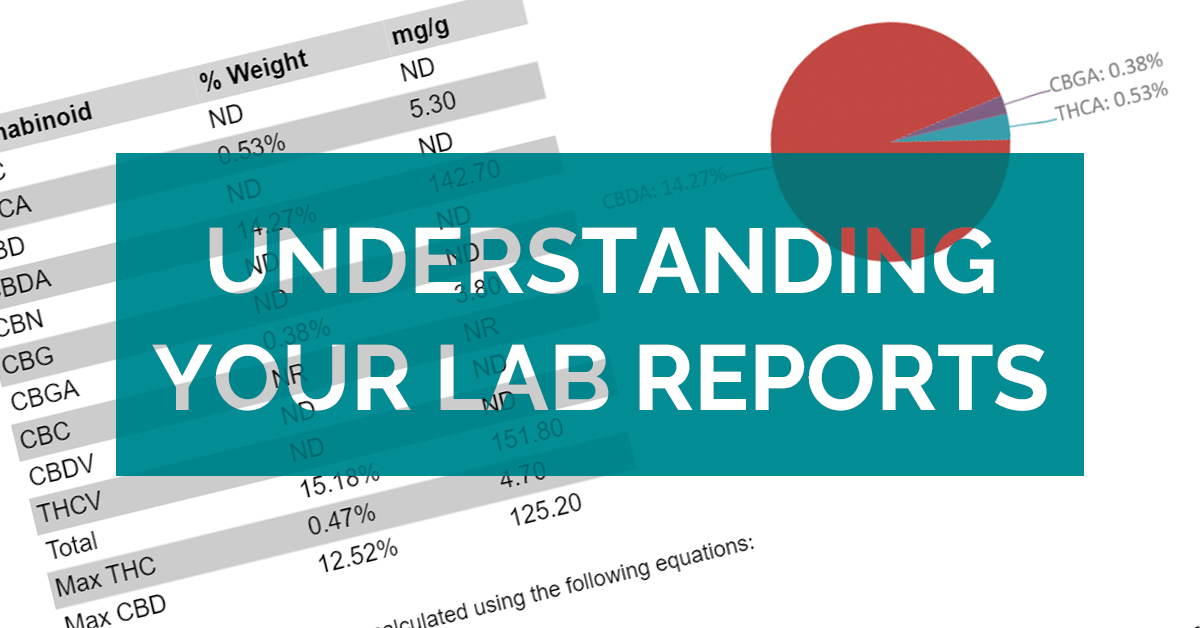
When you order hemp flower online you open the box to find not only your flower but a letter directed at law enforcement declaring that THIS IS HEMP! This letter typically outlines the rules of the 2014 Farm Bill which explain the difference between cannabis and hemp flower. You will also find your lab reports showing you what exactly is in the hemp flower you just purchased.
First and foremost, why do we include these reports with your purchase? The simple answer is to prove that the contents of your order are indeed hemp-derived flower and not cannabis. As hemp farmers, we are required by the state of Colorado to have all of our hemp flower tested by a third-party lab to ensure there is less than .3% THC in the flower we are sending in the mail to your door. We also test for microbials, pesticides, heavy metals, and terpenes.
Third-party lab results are a very important tool for determining which hemp flower product is right for you as the consumer. While the effects of hemp flower are different for everyone, there are ways of interpreting the lab results to give you an edge when selecting your flower.

TERMINOLOGY
There are a few terms to understand when reviewing your lab results. The first I want to address is LOQ. When a compound is reported as <LOQ (less than the limit of quantification) on your COA, this means the compound is detected but is too small to report an exact amount. At Happy Flower Company, our lab simply puts ND meaning “non-detect” or NR “non-reportable value”. This means the compound they are testing for is far below the legal limits but trace elements do exist.
The next thing to be aware of when reading your test results is the “a” at the end of a listed cannabinoid. An example of this would be THCa. Unlike THC, THCA is a non-intoxicating cannabinoid found in raw and live hemp. THCA, or tetrahydrocannabinolic acid, converts to THC once it is exposed to heat. The “a” will drop off and become the main cannabinoid (THC). This process of THCa becoming THC is called decarboxylation and it occurs when THCa is combusted or vaporized.
So what does this mean when interpreting lab reports? If you have labs that state you have .29% THC and .51% THCa, you actually have a lot more THC in your flower than you think. THe actual formula for determining total THC is THC total = (% THCA) x [final mass/initial mass] + (% THC).
Smoking and vaporizing hemp will instantly decarboxylate and add to your cannabinoid intake. You must understand this key factor when reading labs to determine which hemp flower is right for you. You want to always look at the cannabinoids listed in your potency reports to determine exactly how much of a certain cannabinoid is in your hemp flower. For instance, if you are looking at a strain that contains 12% CBD and 2% CBDa, you are getting far more CBD in your flower than you think.
TERPENES
Terpenes are also very important when selecting the flower of your choice, but what exactly are they? Terpenes are aromatic compounds found in many plants, but there are high levels of terpenes present in hemp flower. This is the smell you experience when you open your jar of flower and are greeted with the aroma of lavender or maybe citrus or pine. These are terpenes you are experiencing and their purpose in nature is to keep animals from consuming the plant they are associated with and to protect them from infectious germs. However, terpenes may also offer some health benefits to the human body.

Some research shows promising results from terpenes on the human body. For instance, some studies suggest that Limonene may contain certain therapeutic properties including:
- Anti-inflammatory
- Antioxidant
- Antiviral
Of course until there is more research around the use of terpenes and how they interact with the human body, we cannot be fully sure as to the total benefits of terpenes. In the meantime, we suggest researching terpenes to find more about what they are and how they affect people.
Here is a good resource about terpenes and cannabinoids and how they interact with the human body. Full terpene profiles are available with all hemp flower purchases from Happy Flower Company. Still have questions about terpenes and cannabinoids? While we cannot provide guidance on what strain is best for you, feel free to email us your questions at info@happyflowercompany.com.
